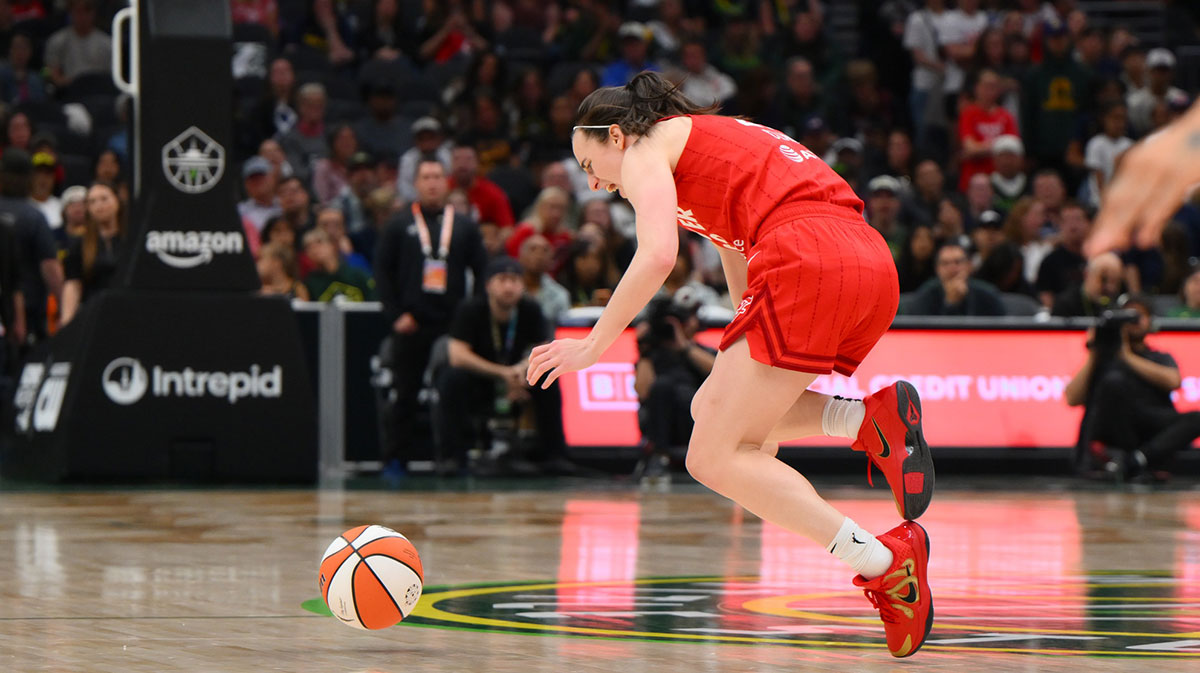Fever’s Star Guard Caitlin Clark Faces Another Setback as MRI Results Reveal Groin Injury Concerns
The Indiana Fever organization received devastating news late Wednesday evening when medical staff confirmed that their franchise cornerstone, Caitlin Clark, would be sidelined indefinitely following comprehensive MRI imaging that revealed significant concerns regarding a groin injury sustained during recent competition. Head coach Stephanie White addressed the media with visible concern etched across her face, explaining that the team’s medical personnel had worked through the night to assess the severity of Clark’s condition and determine the most appropriate course of treatment moving forward.

The timing of this latest injury could not be more problematic for the Indiana Fever, as they currently sit at a precarious 7-7 record and desperately need their star player’s leadership and offensive production to climb out of the competitive middle tier of the WNBA standings. Clark’s absence from the upcoming clash against the Los Angeles Sparks represents more than just the loss of statistical production; it eliminates the team’s primary playmaker, emotional leader, and the player who has consistently elevated her teammates’ performance throughout the challenging early portion of this season.
Coach White’s characterization of the injury as a “day-to-day situation” initially provided some optimism for Fever fans, but medical experts familiar with groin injuries in professional basketball players suggest that such ailments can be notoriously unpredictable and often require extended recovery periods to prevent long-term complications. The fact that Clark required an MRI examination indicates that the medical staff suspected potential soft tissue damage or muscle strain that could not be adequately assessed through standard physical examination protocols alone.
This latest health setback arrives at a particularly unfortunate moment, as Clark had recently returned to action following a three-week absence caused by a quad injury that had already disrupted her rhythm and conditioning during the crucial early months of the WNBA season. The cumulative effect of these recurring injuries has prevented the talented guard from establishing any consistent momentum, despite her impressive statistical averages of 18.2 points, 8.9 assists, and 5.0 rebounds per game that demonstrate her continued elite-level performance when healthy.
However, Clark’s shooting efficiency has shown concerning decline throughout this injury-plagued campaign, with her field goal percentage dropping to 39% and her three-point accuracy falling to a subpar 29.5% that represents a significant departure from her collegiate dominance. Her most recent performance against the Seattle Storm exemplified these struggles, as she managed only six points on an alarming 3-for-13 shooting display while failing to connect on any of her six three-point attempts despite contributing nine assists that kept her teammates involved in the offensive flow.
The strategic implications of Clark’s absence extend far beyond simple statistical replacement, as opposing defenses have increasingly focused their attention on neutralizing her impact through aggressive double-teams, physical play, and sophisticated defensive schemes designed specifically to limit her effectiveness. Without Clark’s gravitational pull drawing defensive attention away from her teammates, the Fever’s offensive system will need significant adjustments to generate consistent scoring opportunities and maintain competitive performance levels against quality opposition.
The Indiana Fever’s medical staff faces a delicate balancing act in managing Clark’s recovery process, as rushing her return could potentially lead to more severe injury complications that might jeopardize her long-term career prospects and the franchise’s championship aspirations. Groin injuries in basketball players often involve complex muscle groups that require careful rehabilitation to restore full strength, flexibility, and explosive movement capabilities that are essential for elite-level performance.
Team management must also consider the broader implications of Clark’s injury history when making decisions about her immediate playing status, as the accumulation of multiple soft tissue injuries could indicate underlying conditioning issues, biomechanical problems, or simply the physical toll of transitioning from college to professional basketball at the highest level. The organization’s investment in Clark’s long-term health and development necessitates a conservative approach that prioritizes complete recovery over short-term competitive advantages.
The psychological impact of these recurring injuries cannot be understated, as Clark must maintain her confidence and aggressive playing style while simultaneously managing the natural hesitation that often accompanies players returning from multiple injury setbacks. Her mental resilience and ability to overcome these physical challenges will ultimately determine whether she can fulfill the enormous expectations placed upon her as the face of the franchise and one of the WNBA’s most marketable stars.
As the Indiana Fever organization awaits further medical evaluations and treatment responses, fans and analysts alike will closely monitor Clark’s recovery progress and the team’s ability to remain competitive during her absence, knowing that their playoff aspirations may ultimately depend on their star player’s successful return to full health and peak performance levels.